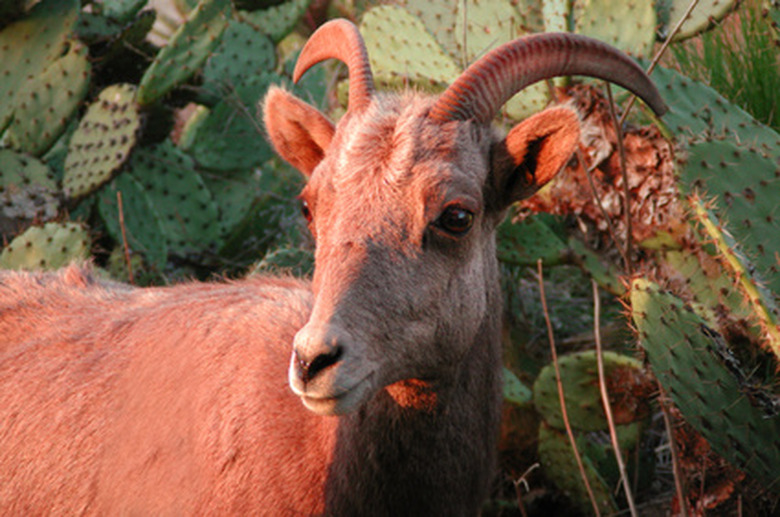What Are Some Animals In The Semi-Arid Desert Biome?
All deserts receive less than 10 inches of rain per year. But not all deserts are boiling hot deserts. Besides the arid deserts, deserts may be semiarid, coastal or even cold. The temperature range of the semiarid desert biome is less extreme than the arid desert, but many semiarid desert animals still require special adaptations to survive.
Semiarid Desert Biome Location
Semiarid Desert Biome Location
Semiarid desert biomes are found in Europe, North America, Russia and northern Asia. They are similar to arid deserts but have more defined seasons, with long, hot summers and minimal rainfall during winter. Summer temperatures are not as intense as arid deserts, and nighttime temperatures tend to be cooler. In the United States, semiarid deserts are found in Utah, Montana, and throughout the Great Basin, which stretches from California and Nevada to Mexico. The moderate climate of the semiarid desert makes it a home to many animal species.
Jack Rabbits in the Semiarid Desert
Jack Rabbits in the Semiarid Desert
Jack rabbits are a bit larger than normal rabbit breeds. Their habitat is not limited to the semiarid desert, they also live in forests, prairies and grasslands. Jack rabbits are herbivores that feed on grasses, twigs, plants and tree bark. The jack rabbit adapted to the desert heat through bodily habits. For example, the rabbit's ears, which normally radiate heat, constrict and lay against the back in order to maintain lower body temperatures when temperatures rise above 104 degrees Fahrenheit.
Desert Bighorn Sheep
Desert Bighorn Sheep
The desert bighorn sheep is common to areas such as the Arizona Strip, in northwest Arizona. As noted by the U.S. Bureau of Land Management, bighorn sheep tend to live in rocky areas with canyons, cliffs and washes, a common scene in semiarid desert environments. The desert bighorn sheep can survive on small quantities of water and can even take water from desert succulent plants.
Pronghorn Antelope
Pronghorn Antelope
The pronghorn antelope is common to prairies and deserts. They are native to America and do not live in any other countries. They are not actually members of the antelope family, but belong to their own family, which contains five species. Three of these species are found in deserts. Desert pronghorns feed on cacti, grasses, weeds and other plants, and they can live on very small amounts of water.
Smaller Mammals
Smaller Mammals
Other mammals that live in the semiarid desert biome include kangaroo rats and skunks. Both live in burrows to protect themselves from the high daytime temperatures and emerge in the cooler night temperatures. Kangaroo rats metabolize water from the seeds they eat. Skunks are carnivores. Bats also survive in the semiarid desert by flying at night and feeding on insects.
Arthropods in the Semiarid Desert
Arthropods in the Semiarid Desert
Arthropods include insects, spiders and scorpions. Insects in the semiarid desert include bees, flies and ants. Harvester ants gather seeds to store in their nest. Bees and many flies feed on nectar. Tarantulas and scorpions hunt other insects.
Reptiles in the Semiarid Desert
Reptiles in the Semiarid Desert
Lizards and snakes survive in the semiarid desert biome. Snakes, including rattlesnakes, and lizards, including chuckwallas and Gila monsters, hunt small mammals, helping control the rodent population. Another reptile in the semiarid desert is the desert tortoise.
Birds of the Semiarid Desert
Birds of the Semiarid Desert
Another group of semiarid desert animal is birds. Owls, vultures and hummingbirds live in the desert. Owls live in burrows or hollows to avoid the daytime temperatures. Vultures urinate on their legs, cooling them through evaporation. The cooler blood then circulates back into the vulture's body. Vultures also can soar high into the cooler air above the desert. Hummingbirds migrate to cooler areas when the desert becomes too hot.
References
Cite This Article
MLA
Crawford, Nicole. "What Are Some Animals In The Semi-Arid Desert Biome?" sciencing.com, https://www.sciencing.com/animals-semiarid-desert-biome-7218102/. 22 November 2019.
APA
Crawford, Nicole. (2019, November 22). What Are Some Animals In The Semi-Arid Desert Biome?. sciencing.com. Retrieved from https://www.sciencing.com/animals-semiarid-desert-biome-7218102/
Chicago
Crawford, Nicole. What Are Some Animals In The Semi-Arid Desert Biome? last modified March 24, 2022. https://www.sciencing.com/animals-semiarid-desert-biome-7218102/
